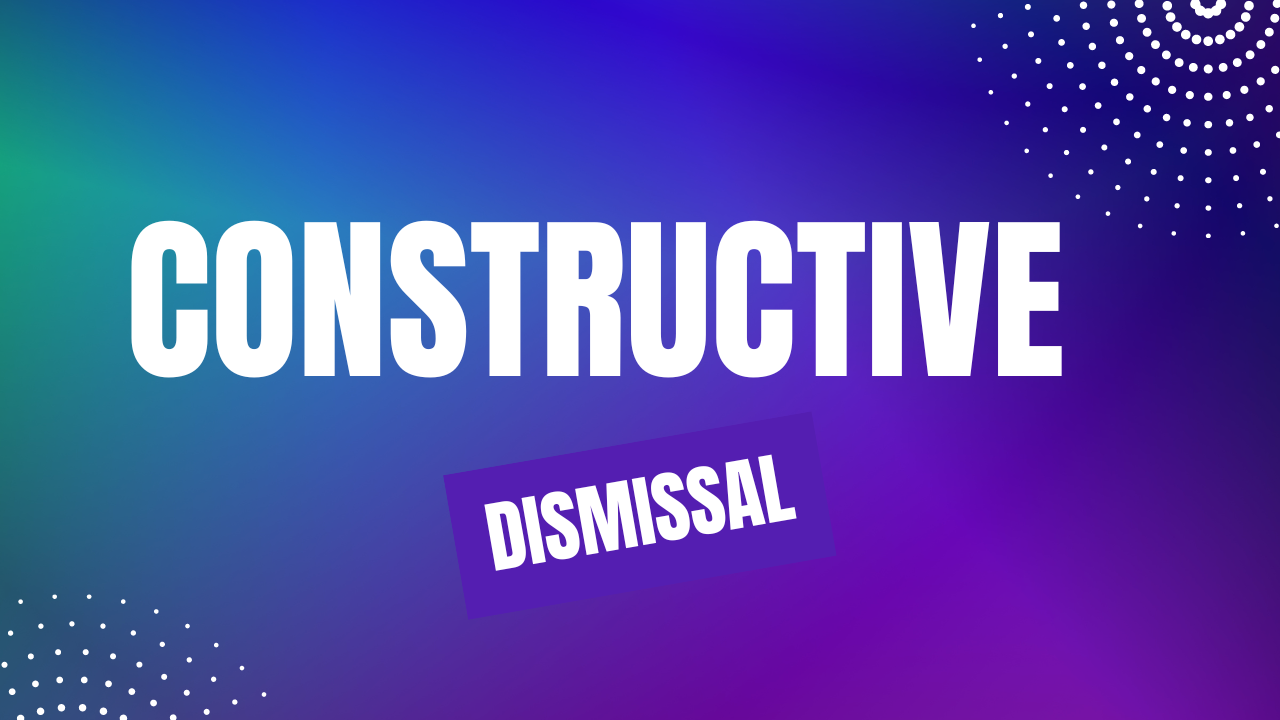Introduction:
In the realm of employment, constructive dismissal is a term that holds significant importance. It refers to a situation where an employee is forced to resign due to intolerable working conditions created by the employer. In this blog post, we will delve into the causes and effects of constructive dismissal, explore the signs to watch out for, and provide guidance on what employees can do when faced with such circumstances.
Causes of Constructive Dismissal:
1. Unfair Treatment: Consistent unfair treatment, such as discriminatory practices, favoritism, or unequal opportunities, can contribute to a hostile work environment.
2. Breach of Contract: If an employer violates the terms of an employment contract, such as reducing pay, demoting an employee without valid reasons, or changing working conditions without agreement, it may lead to constructive dismissal.
3. Harassment or Bullying: Sustained harassment or bullying by colleagues or superiors can create an unbearable work environment, forcing an employee to resign.
Effects of Constructive Dismissal:
1. Emotional and Mental Stress: Experiencing constructive dismissal can have a significant impact on an employee's mental and emotional well-being, leading to stress, anxiety, and even depression.
2. Financial Strain: Resigning due to constructive dismissal can result in financial difficulties, especially if the employee does not have another job lined up or faces challenges in finding new employment.
3. Damage to Reputation: Constructive dismissal can tarnish an employee's professional reputation, as it may raise questions during future job interviews about the reasons for leaving previous employment.
Signs of Constructive Dismissal:
1. Unreasonable Changes in Working Conditions: Drastic changes in work hours, location, or responsibilities without proper consultation or agreement.
2. Isolation and Exclusion: Being deliberately excluded from important meetings, projects, or decision-making processes, leading to a lack of growth opportunities.
3. Lack of Support: A consistent lack of support from superiors or colleagues, resulting in a feeling of being undermined or undervalued.
What to Do:
1. Document Incidents: Keep a record of any incidents, conversations, or actions that contribute to the constructive dismissal, including dates, times, and individuals involved.
2. Seek Legal Advice: Consult with an employment lawyer to understand your rights, obligations, and potential legal recourse.
3. Communicate with the Employer: Express your concerns to your employer in writing, outlining the issues and requesting a resolution. Keep copies of all correspondence.
4. Explore Mediation or Grievance Procedures: If available, consider engaging in mediation or following the company's grievance procedures to address the issues.
5. Consider Resignation as a Last Resort: Resignation should be considered after exhausting all other options. Consult with a legal professional before taking this step.
Constructive dismissal is a serious matter that can have detrimental effects on an employee's well-being and career. By understanding its causes, recognizing the signs, and taking appropriate action, employees can navigate this challenging situation more effectively. Remember, seeking legal advice and support is crucial in protecting your rights and ensuring a fair resolution.
Disclaimer: This blog post is intended for informational purposes only and should not be considered as legal advice. For specific legal guidance related to constructive dismissal, consult with an employment lawyer.



Comments ()